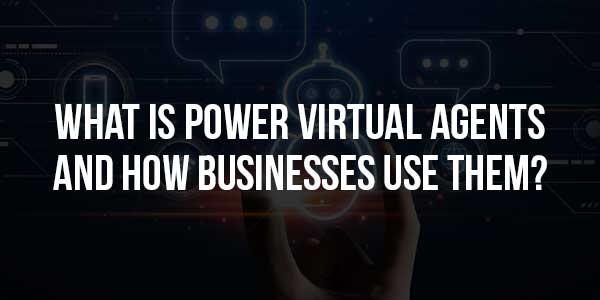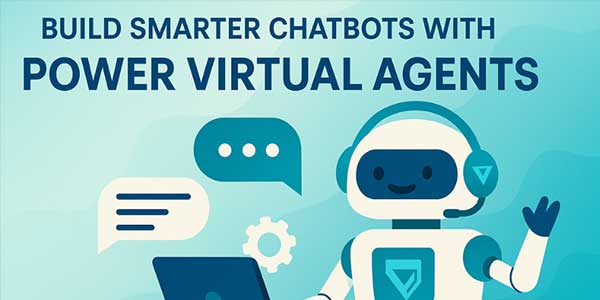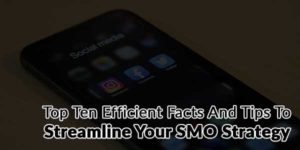
Various solutions are on hand with Power Virtual Agents from Microsoft, allowing companies to build intelligent chatbots able to operate without being developed by coders. Along with being a no-code chatbot platform, it helps organisations set up customer interaction flows, automate responses, and support conversations in real-time through AI. The solution allows enterprises to improve and retain customer experiences while simultaneously operating internally with lower manual work. With the right Power Platform Consulting Services, businesses can maximise the potential of Power Virtual Agents and integrate them seamlessly into their processes.
Unlike traditional bots with an undertaking of advanced technical know-how, a Power Virtual Agent is an AI-powered virtual agent that is well integrated with Microsoft Power Platform and other business tools. The teams can develop scalable solutions that react to changing customer needs. From dealing with basic FAQs to integrating with backend systems for more complicated inquiries, it functions as the modern enterprise chatbot automation solution.
Table of Contents
What Are Power Virtual Agents?
Microsoft Virtual Agents is a type of intelligent chatbot service that allows companies to create strong no-code chatbots. It makes it easier for organisations to treat customers and workers with automated assistance offered 24/7. Accessible with ease, they help users, whether technical or not, to deploy conversational solutions without complex coding requirements.
A No-Code Chatbot Platform for Everyone:
One big selling point for these agents is that it is a no-code chatbot building platform. This comes down to the fact that even people without prior knowledge of programming can create and maintain a bot. The platform provides a visual interface where conversation pathways can be designed with drag-and-drop features, minimising dependence on IT teams.
Integration with Microsoft Ecosystem:
Microsoft Power Virtual Agents integrates with Microsoft Teams, Dynamics 365, and Power Automate. The chatbots can manage activities such as getting CRM data, scheduling meetings, or automating workflows. Through integration, businesses can initiate conversational AI that does some front-end responding and initiates behind-the-scenes processes.
AI-Powered Virtual Agents for Smarter Conversations:
It is AI-driven natural language processing at the heart. These AI-driven virtual agents comprehend customer queries, understand intent, and respond accordingly. This allows companies to interact with customers as if they were interacting with a person, while also increasing customer satisfaction and lowering the manual burden placed on their support teams.
As part of Microsoft Power Platform, Microsoft Virtual Agents has enterprise-grade security, compliance, and scalability. Hybrid users will find this technology easy to adopt and implement because the platform fits naturally into existing IT ecosystems without requiring any new infrastructure or training.
The Scalable Chatbot Automation Solution:
Microsoft chatbot platform serves chatbot automation and may handle simple user queries, requests, or directions for processes that keep an automated set of repetitive interactions:** Human intervention is reduced, letting the focus move to complex and high-value efforts for employees.
What Are the Benefits of Power Virtual Agents?
The benefits of Power Virtual Agents extend beyond mere automation. It unites ease of design with strong enterprise capabilities to create a utility that crosses industrial boundaries. Businesses use it to reduce expenses, enhance customer satisfaction, and attain scalability for automation without necessarily investing in specialised technical skills or infrastructure.
Lower Cost and Workload Reduction:
With the Microsoft chatbot platform handling automation of repetitive queries, it cut down greatly on operational costs. Gone are the days when customer-service agents would respond to mundane questions such as resetting passwords or confirming appointments and calendars. Such a workload transfer takes pressure off staff and improves response time.
Better Engagement with Customers:
Microsoft Virtual Agents operate 24/7, which means customers get instant responses. In turn, quicker resolutions mean their satisfaction and loyalty toward the brand increase. On top of it all, chatbots can be customised to incorporate a brand voice and values, which further enhances customer engagement.
Scalability Across Business Functions:
The other major benefit of this is scalability. Microsoft chatbot can be set up for HR, finance, IT, and customer service. This provides the organisation with consistent support and automation of processes within any department, regardless of complexity or size.
AI Seamless Integration:
Alongside the AI engines, it continues learning, improving accuracy in intent identification, and providing coherent responses depending on contextual change, incorporating customer behaviour shifts. This kind of continuous improvement, therefore, makes for a chatbot that gets smarter and more effective while being used.
Easy Deployment and Management:
Unlike previously used chatbots, it does not require hours of setting up and maintenance. Quick deployment is made possible by the easy-to-use interface. Businesses track performance using the analytics dashboards, monitor usage trends, and tame responses without the need for special IT teams.
Cross-Sector Versatility:
Power Virtual Agents crosses sectors and solves specific business challenges in healthcare, retail, financial services, and education. In retail, the bot handles order tracking; in healthcare, it helps with appointment booking. That kind of versatility speaks to its adaptability.
How Businesses Use Power Virtual Agents?
Power Virtual Agents use cases are diverse and industry-specific, with their scope extending from customer query handling to process automation and enhancement of employee experiences. Organisations implement it beyond just a chatbot for support; it is used as a broader automation solution for driving efficiency across many functions.
Customer Service Optimisation:
Customer service is considered a potential use case for the Microsoft chatbot platform. In medicine and healthcare, chatbots handle simple queries, track service orders, or offer troubleshooting support. This helps improve service quality and reduces the need for staff involvement.
Internal HR Assistance:
It delivers benefits within organisations, too. HR departments employ it to handle employee queries relating to leave balances, policies, or benefits. By providing such instant responses, such a tool increases employee satisfaction and lowers workload for HR teams.
IT Helpdesk Automation:
For IT departments, they can handle basic support like password resets, requests for system access, or some type of trouble with connectivity. This means fewer helpdesk tickets and quicker solutions accepted by the employees.
Sales-and-Marketing-Support:
Sales and marketing chatbots walk potential customers through features, pricing, and lead qualification. Then, Power Virtual Agents capture customers’ intent and hand it over to CRM systems, such that the sales pipeline is always up to date.
Industry-Specific Adoption:
From educational institutions for student queries to banks for transaction FAQs, the chatbot development tool truly proves its versatility across domains. They are so adaptable that they can tackle both customer-facing and internal business issues.
Chatbot For Business Without Coding:
A lot of organisations deploy a chatbot development tool for their chatbot requirements, minus the coding. SMBs, especially, find it worthwhile to lessen the barrier to put in place these sophisticated AI chatbots without having to hire specialised developers.

How Power Virtual Agents Works?
Power Virtual Agents harness the strength of conversational design, artificial intelligence, and automation. Companies draw up conversation flows in visual editors while the chatbot applies natural language processing (NLP) to make sense of customer queries. These then generate responses or workflows, making it an automation tool of functionality and intelligence.
Visual Conversation Designer:
The drag-and-drop designer of the platform was built for nontechnical users. They can simply map the complete conversation path along the way or use variations along a particular path to address the customer journey, ranging from answering simple FAQs to guiding the customer through a multi-step process.
AI and Natural Language Processing:
A chatbot development tool uses AI models to judge the intent of the end-user and provide context-aware answers. These ensure that the chatbot will be able to respond to variations of questions instead of having to be pre-programmed for every single conceivable question.
Integration with Power Automate is one of its strengths. This empowers bots to trigger workflows such as sending emails or updating databases or connecting with third-party applications, all of which increase the efficacy and activity of the interaction.
Analytics and Continuous Improvement:
Performance metrics can be tracked from analytics dashboards. Statistics such as resolution rates, customer satisfaction rates, or engagement levels assist in improving the conversation flow. By learning over time, Power Virtual Agents grow with data.
Security and Compliance:
Being part of the Microsoft ecosystem, the Microsoft chatbot development tool inherits enterprise-grade security, compliance, and governance. This security and governance make it great for use with any data containing sensitive business or customer information, or in any highly regulated industry.
Flexible Deployment Options:
Businesses have a lot of options to deploy their Power Virtual Agents across multiple channels: a website, a mobile app, Microsoft Teams, or social platforms. This is where omnichannel support is a must so that users can speak to the chatbot wherever they feel comfortable.
Conclusion:
The chatbot development tool is revolutionising the art of having conversations with customers and employee interactions in an organisation. Through an easy-to-use, no-code platform for chatbots, it allows businesses to build intelligent bots for real-time assistance without heavy lifting from developers. Being scalable out of the box, enriched by AI-powered insights, and integrated into the family of Microsoft tools, it is the cut-out solution for any digital transformation endeavour.
The many applications of these Agents, including customer support, HR questions, process automation, or even employee self-service, showcase a great variety of uses across industry verticals. Power Virtual Agents features with the advanced force ensure that enterprises can streamline their businesses, increase efficiency, and minimise cost, while simultaneously improving user experience.
Being an AI-driven virtual agent, it is a strategic tool that enables enterprises to scale smarter beyond just a chatbot without coding.
Start building future-ready chatbot automation solutions with Power Virtual Agents today.
Frequently Asked Questions:
- What are Power Virtual Agents?
It is a no-code chatbot platform from Microsoft that allows businesses to create intelligent conversational agents without much deep technical knowledge. It enables teams to create chatbots that adequately engage customers and employees.
- What are the key Microsoft Virtual Agents features?
These include AI-driven responses, integration with the Microsoft Power Platform, natural language processing, multi-channel deployment, and powerful analytics. These capabilities allow the software to be an end-to-end chatbot automation for modern enterprises.
- How do businesses use Power Virtual Agents?
Businesses employ the Microsoft chatbot development tool for customer support, employee self-service, HR query resolution, sales enablement, and process automation. These diverse applications for this technology speak volumes about how the tool facilitates improvement in efficiency across various industries.
- Can I use the Microsoft chatbot development tool without any coding?
Indeed, Microsoft chatbot development tool is a bit of an exception as it is actually a no-code chatbot platform. Business users can simply create, customise, and deploy bots without programming skills.
- Why do organisations need to look for AI-oriented virtual agents?
They follow faster responses, personalisation, and scalability. They assist businesses in raising customer satisfaction, reducing manual working hours, and developing digital experiences on a smoother level, without the heavy costs of development.

 About the Author:
About the Author:
















Be the first to write a comment.